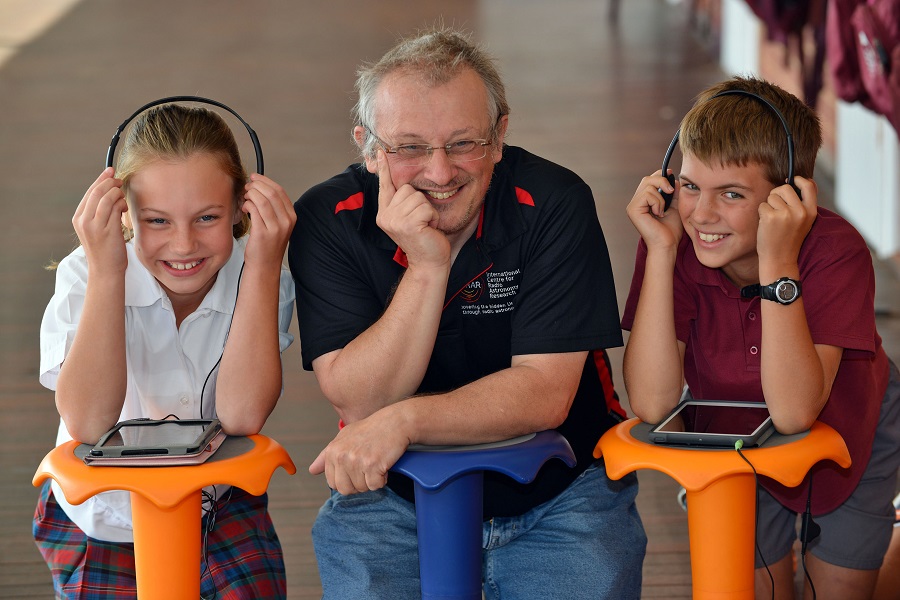What is life on Earth like, according to Year 5 and 6 students? Students from Dalkeith Primary School in WA are planning to let extraterrestrial life know as part of an activity through our Scientists and Mathematicians in Schools program.
What is life on Earth like, according to Year 5 and 6 students?
Students from Dalkeith Primary School in WA are planning to let extraterrestrial life know as part of an activity through our Scientists and Mathematicians in Schools program.

STEM volunteer Kevin Vinsen from ICRAR sitting with two students from Dalkeith Primary School who are listening to an audio recording with headphones
Blast off: Kevin with Dalkeith Primary School students recording a message for outerspace
Senior Research Fellow Kevin Vinsen from the International Centre for Radio Astronomy Research (ICRAR) is a volunteer for our Scientists and Mathematicians in Schools (SMiS) program, which partners science, technology, engineering and maths (STEM) professionals with teachers to deliver engaging STEM education.
Kevin has been working with the primary school students, along with ICRAR Artist-in-Residence Loren Kronemyer, on an astronomy, coding and art project. The students first learned how a computer works in a series of computer science unplugged activities, learned how to build a Piper computer using a Raspberry Pi microcontroller, were introduced to the basics of the computer programming language Python and are now recording and encrypting messages, including an audio and visual message, to send into space.
The plan is for the messages to be sent locally in the universe, approximately four light years away. That way if it is received, decoded and a return message sent, these students will be university age. Negotiations are underway to see if the students’ messages can be sent into space via transmitters. Alternatively, they will be broadcast through radio satellites.
The students are part of Dalkeith Primary School’s STEM enrichment program and Tamara Doig, Deputy Principal, has been working with Kevin since 2015.
“We constantly strive to create a learning environment that will inspire and increase students’ interest in STEM fields. We want our students to become innovators and risk takers who create solutions for real world problems. The partnership with Kevin through the SMiS program is helping the students achieve this,” explains Tamara.
Kevin has run other hands-on activities with the school’s students including a whole school science day run by the entire ICRAR Education Outreach team with water rocket launchers and high powered telescopes, a talk for senior students on Radio Astronomy and the Square Kilometre Array, analogue computing, building an actual computer and Python programming. He values his partnership with Dalkeith Primary School through SMiS and is incredibly passionate about engaging students with science. He particularly loves how these students “free-think” the science.
The sky is not the limit for this group of Dalkeith Primary School students who have set their sights on extra-terrestrial life as part of this cutting-edge science project. We’re sure they are excited about the possibility of receiving a response, as are we!
Scientists and Mathematicians in Schools is funded by the Australian Government Department of Education and Training. Since the program began in 2007, more than 5800 partnerships have been facilitated between teachers and STEM Professionals.
And being National Volunteer Week this week, a big shout out to all of our Scientists and Mathematicians in Schools partners who are making a positive impact to STEM education across Australia!

